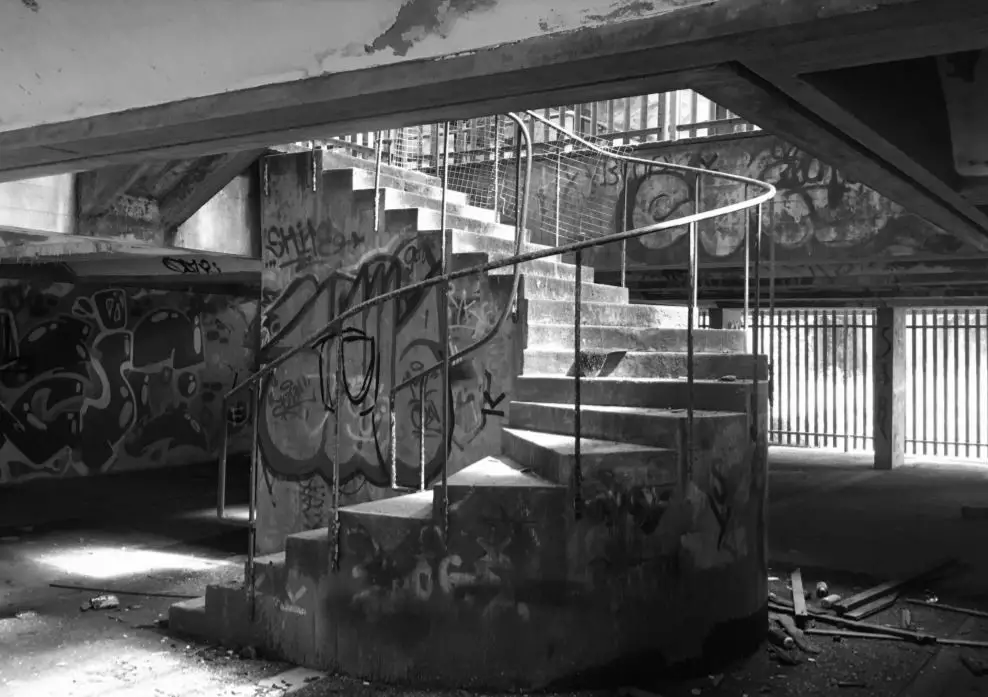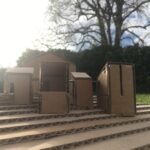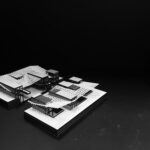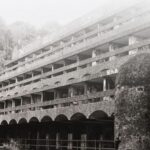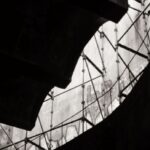Saint Peter’s Seminary Cardross Study Part Five, Modern Scottish Architecture, Architectural Education Dissertation
Saint Peter’s Seminary Cardross Building Study Part 5
29 November 2021
Third Year Architectural Dissertation by Daniel Lomholt-Welch, Scotland
Daniel Lomholt-Welch
Architecture MA(Hons) Dissertation
Saint Peter’s Seminary Cardross Building – Indefinable Definitions: The Sublime and the Numinous
5. Indefinable Definitions: The Sublime and the Numinous
The reaction of a sizeable share of those who visit the Seminary use a lexicon that gives rise to ideas of conventional sacred architectural experiences, using words such as ‘awe’, ‘breath-taking’, ‘surreal’, and ‘mystical’. A term that comes close to describing this reaction is ‘the numinous’. The numinous is a notion developed by the German theologian Rudolf Otto in 1917 and can be explained as a ‘non-rational, non-sensory experience or feeling whose primary and immediate object is outside the self.’[1] This reaction is not limited to a certain place or person – theoretically it could be experienced by anyone, anywhere. It does not necessarily pertain to any specific religious practice, but more to a general atmospheric experience. In the context of Saint Peter’s, the numinous is a theory that contradicts Eliade’s notion of the homo religiosus and homo a-religiosus by breaking down the objective dualism of spatial experience and proposing that more focus might be paid to the subjectivity of this experience. It does not deny the potential for our objective reality to give rise to such a reaction but shifts the emphasis to a less polarised position. Clausen shares this view, concluding that the sacred doesn’t lie within an object or phenomenon, nor is it something that we incite from the world, but that it actually lies somewhere between the objective physical world and our subjective interpretation of it.[2] If this reaction is reliant on both of the aforementioned factors then why does a building that ceased active religious practice over forty years ago, now being experienced by a mainly secular general public, continue to generate a reaction that tends towards the numinous?
One viable path for exploration might be to return to the complex debate between subject and object. It is clear that both are active participants in provoking a reaction tending towards the numinous, but the ways in which they manipulate each other are dark and murky. The architectural historian William Whyte questions whether we as architectural historians project meanings onto buildings, giving them specific attributes that are perhaps not inherent to their existence.[3] The philosopher Umberto Eco goes even further, to suggest that buildings can operate as ‘open works’, in that they are open to a sense of freedom of meaning-making and interpretation.[4] These arguments certainly hold some weight when considering the Seminary. The majority of visitors to the building go there of their own volition and are at the least aware of its past as a place of religious practice, suggesting that there may be a degree of projection of meaning onto the building.[5] Clausen draws attention to the ‘willing experience’ of the subject as being critical to how a space induces a sense of profundity, significance or sacredness, highlighting the brain’s ‘right-hemisphere’ qualities such as atmospheric perception and imagination in this reaction.[6] A sizeable minority of visitors to the Seminary reference its former use as a place of worship having an atmospheric effect upon them, giving weight to the notion that we project meaning onto buildings.[7] This projection is dependent on the subject, as there has not been any religious practice present in the building for a long time, therefore requiring the subject’s imagination to provoke such a reaction. The variation of experiences recorded at the Seminary also provides a connection to Eco’s notion of buildings having the potential to act as open works, not having any singular ‘true meaning’.[8] For some, the building retains vestiges of sacredness despite its desacralisation, and would even go as far to say that the current state of the building constitutes a desecration. In contrast to this, many argue that the building long ago gave forfeit to its sanctity, and that while the ruinous state of the Seminary is regrettable, there is no sense of desecration.[9]
What is made clear by the number of subjectivities surrounding the building, however, is that there must also exist certain objectivities relating to it that give rise to such a prominence in experiences tending towards the sublime within its crumbling vaults. The sublime is not only associated with positive reactions such as awe or inspiration, but with reactions such as fear and grief.[10] While many do experience Saint Peter’s in a positive way, it is undeniable that there are aspects to it that some react to in a negative way. As a place of isolation far from the comforts of civilisation, it can provoke sentiments of eeriness, its dark passageways and decaying skeleton giving rise to reactions akin to fear. For some, the atmosphere of abandonment heightens this, referencing the former function as a spiritual building as being unnerving. Much of the graffiti that daubs the remnants of the Seminary can also be unsettling, often referencing distasteful acts of a violent or sexual nature. One could liken some of these reactions to the ‘Mysterium Tremendum’ that Otto claimed to ‘loom before the mind and touch the feelings.’[11] However, the majority of reactions to the building tend towards positivity.[12] The philosopher Malcolm Budd claims that the ‘hallmark of an experience of the sublime’ involves a feeling of wonder and an experience of vulnerability of one’s individual self.[13] If we take this to be true, then it is easy to see that the Seminary could be prone to inducing such an experience.
–
Diagram by author, based on Kant’s distinctions of the etymologies relating to the sublime from his Observations on the Feeling of the Beautiful and Sublime.[14]
The sublime, however, is an aesthetic term as defined by Otto, and thus has a complex relationship to the numinous.[15] The etymologies of these terms may give clues as to how we can perceive this relationship, and how it is represented in the contemporary experiences of those who visit the seminary today. In distinguishing the various subsets of aesthetic appreciation, Immanuel Kant provides a framework for exploring how the sublime is experienced in Saint Peter’s.[16] Acknowledging the potential for imprecision of vocabulary that may vary within the survey, the recurrences of certain words from Kant’s delineation within the responses indeed illuminates notions of holiness and the sublime regarding the space.[17]
Mary Jones develops the discussion about the relationship between the sublime and the numinous by considering their respective associations towards religion. The sublime, she claims, is not associated to religion or religious practice,[18] although some scholars such as Longinus have attempted to relate the sublime to religious values in order to give it more backing as a concept.[19] Jones asserts that in comparison to the numinous, the sublime is easier to comprehend, and thus draws on a larger body of work.[20] The numinous, however, is deemed to be far more mysterious and inscrutable, a concept that is inextricably linked to the divinities.[21] She proceeds to say that a sense of rationality, or mortality, is not vital to experience the numinous,[22] a statement which stands in contrast to the definitions of the sublime given by Otto, mentioned earlier in this chapter. In this definition, the sublime is a phenomenon that is frequently experienced in tandem with fear, which inherently involves a sense of mortality. Both Otto and Jones are in agreement in claiming that ‘the sublime is a pale reflection of the numinous.’[23] This statement gives priority to the experience of the religious, and is reminiscent of the dichotomy that Mircea Eliade created between the lived experience of the homo religiosus and homo a-religiosus as discussed in the previous chapter. However, given that Otto and Jones stop short of precluding any human-being from experiencing either the sublime or numinous at any given point, their argument is less obtrusive in this discussion.
What can be said with certainty about the concepts of the sublime and the numinous is that they are ineffable at best.[24] It is worthwhile, therefore, to acknowledge the speculative nature of the investigation due to such vague definitions and subjective beliefs about the meanings of the two concepts. James Elkins, in attempting to define the sublime and calling for a moratorium on its usage, inadvertently acts to destroy the very notion he seeks to elucidate.[25] It is its inability to be grasped that is its virtuous quality. The relationship between such an elusive concept as the sublime, and one reckoned to be even more elusive (the numinous), is consequently a nebulous one. Jones concludes that they are distinct concepts based primarily on their leanings towards, and away from, religion. She continues, to state that the sublime is clearly a signifier of the numinous.[26]
Recalling Otto’s definition, it is important to note that the sublime is an experience that is promoted from within the subject by what they perceive in the objective physical world, and not promoted from the world itself. This, he states, is where the sublime differs from the numinous in its induction from the objective physical world.[27] This proclivity to induce the sublime supports the notion of the objective power of Saint Peter’s Seminary to generate reactions within the subject of the numinous.
[1] Rudolf Otto, The Idea of the Holy, trans. John W. Harvey (London: Oxford University Press, 1923), 7.
[2] Clausen, Sacred Architecture in a Secular Age, 96.
[3] William Whyte, ‘How do buildings mean? Some issues of interpretation in the history of architecture’, in History and Theory 45, no.2 (May 2006), 165.
[4] Umberto Eco, The Open Work (Cambridge, Massachusetts: Harvard University Press, 1989), 48.
[5] Refer to survey
[6] Clausen, Sacred Architecture in a Secular Age, 96.
[7] Refer to survey
[8] Umberto Eco, The Open Work, 52.
[9] Refer to survey
[10] Otto, The Idea of the Holy, 9.
[11] Otto, The Idea of the Holy, 15.
[12] Refer to survey
[13] Malcolm Budd, “The Aesthetic Appreciation of Nature as Nature,” in The Aesthetic Appreciation of Nature: Essays on the Aesthetics of Nature, ed. Malcolm Budd (Oxford: Clarendon, 2002), 16.
[14] Immanuel Kant, Observations on the Feeling of the Beautiful and Sublime (Cambridge: Cambridge University Press, 2011), 126.
[15] Otto, The Idea of the Holy, 41.
[16] Kant, Observations on the Feeling of the Beautiful and Sublime, 126.
[17] Refer to survey
[18] Mary Jones, ‘The Discourses of the Secular Sublime and the Concepts of the Numinous and Mysterium Tremendum in the Work of Rudolf Otto’ (Master’s Thesis, University of Leicester, 2017), 190.
[19] Cassius Longinus, Longinus on the Sublime: The Peri Hupsous, trans. Nicolas Boileau-Depreaux (New York: Scholars Facsimilies & Reprint, 1975), 12.
[20] Mary Jones, ‘Discourses of the Secular Sublime,’ 196.
[21] Mary Jones, ‘Discourses of the Secular Sublime,’ 164.
[22] Mary Jones, ‘Discourses of the Secular Sublime,’ 192.
[23] Mary Jones, ‘Discourses of the Secular Sublime,’ 37.
[24] Mary Jones, ‘Discourses of the Secular Sublime,’ 194.
[25] James Elkins, ‘Against the Sublime,’ in Beyond the Finite: The Sublime in Art and Science, ed. Roald Hoffmann and Iain Boyd White (New York: Oxford University Press, 2011), 21.
[26] Mary Jones, ‘Discourses of the Secular Sublime,’ 195.
[27] Otto, The Idea of the Holy, 47.
+++
Saint Peter’s Seminary Cardross Study – introduction
Saint Peter’s Seminary Cardross Study Part 1
Saint Peter’s Seminary Cardross Study Part 2
Saint Peter’s Seminary Cardross Study Part 3
Saint Peter’s Seminary Cardross Study Part 4
Saint Peter’s Seminary Cardross Study Conclusion
+++
Saint Peter’s Seminary Cardross Study Dissertation by Third Year Student at Edinburgh School of Architecture information / images from Daniel Lomholt-Welch
Edinburgh School of Architecture Student Projects
Second Year Student Projects at Edinburgh School of Architecture
Second Year Student Projects at Edinburgh School of Architecture
First Year Student Projects at Edinburgh School of Architecture
First Year Student Projects at Edinburgh School of Architecture
Education Building Designs
New Macallan Distillery in Speyside
Design: Rogers Stirk Harbour + Partners (RSHP)
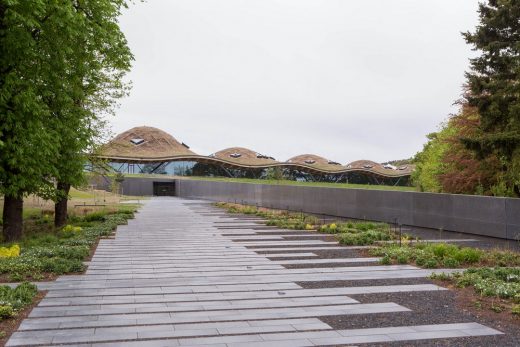
photo © Simon PricePA Wire
Architecture and Landscape Architecture | Edinburgh College of Art
Comments / photos for the Saint Peter’s Seminary Cardross Study Part 5 by Daniel Lomholt-Welch, Scotland, United Kingdom, page welcome.

